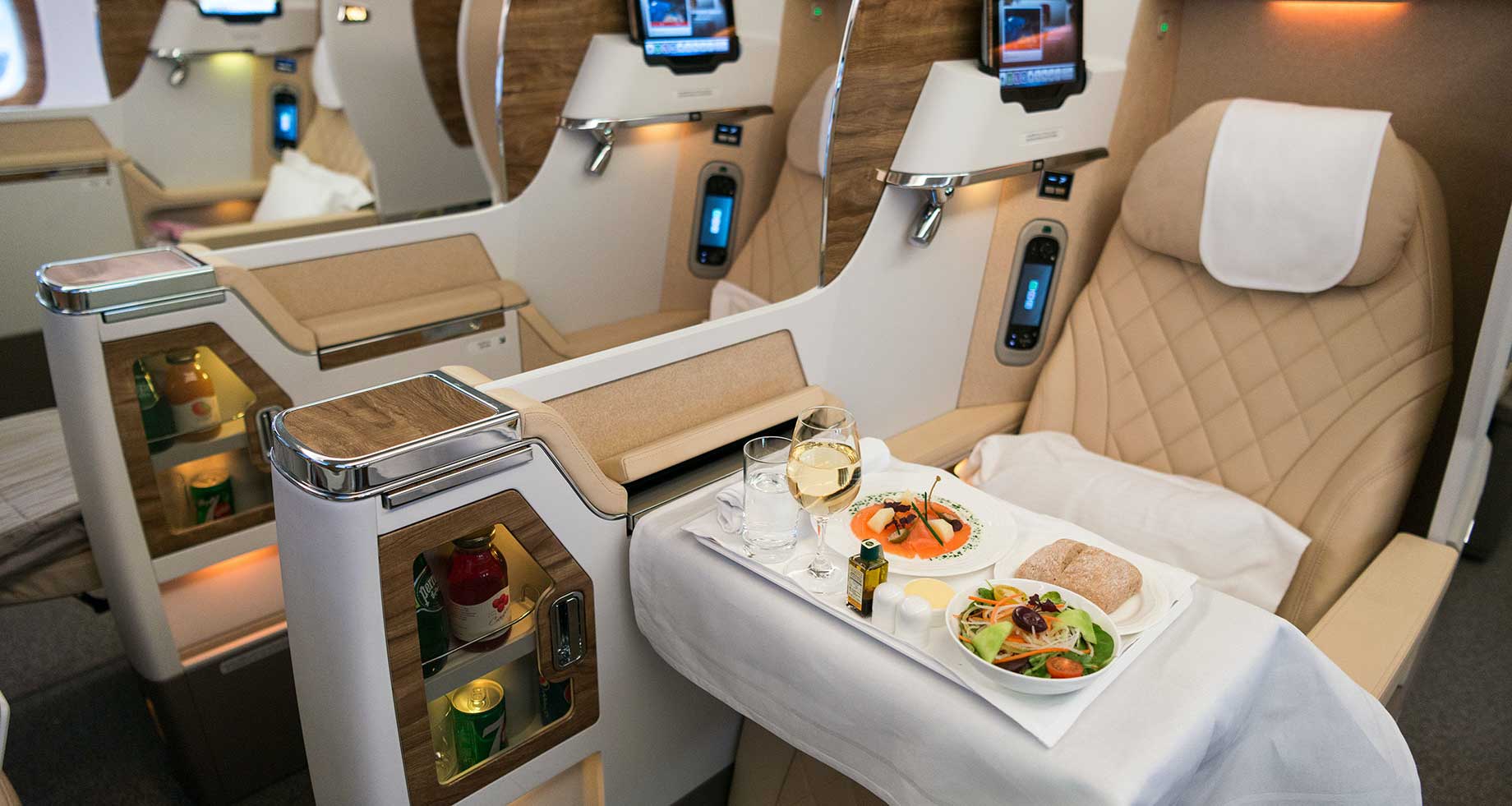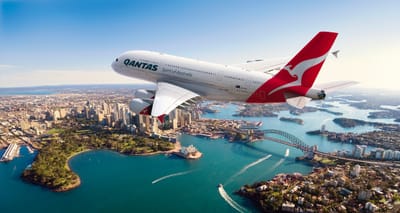You took a trip, opened a new rewards credit card or earned some points or miles through a promotion. Welcome to the most exciting game ever created, where the points DO matter and incredible travel rewards await.
In this article, I’ll take a look at five of the most common mistakes that are made by players of the points & miles game so that you can avoid them and get the most out of your rewards currencies.
Letting your airline miles or hotel points expire
Every single point has value, and it’s a shame to see them evaporate into thin air — taken back by the airline, hotel or pizza joint just because you haven’t been active in awhile.
Even if you don’t plan to travel, there are still many ways to maintain activity in your rewards account. In my very first points & miles blog post, I presented a number of ways to prevent airline miles & hotel points from expiring.
Remember that a lost point is, oftentimes, a penny (or more) lost, so it’s important to guard your balance whether it is large or small.
Setting too low a valuation on different rewards currencies
Not all points and miles have equal value.
Not all points and miles have equal value.
Not all points and miles have equal value.
I said that three times, and it is one of the most important facts to remember in this game. As a general rule of thumb, transferrable credit card rewards points (such as American Express Membership Rewards or Chase Ultimate Rewards points) are more valuable than airline miles, and airline miles are typically more valuable than hotel points.
But, even within those groupings, some programs are still more valuable than others. In a list of current valuations published by The Points Guy, Alaska Airlines is said to have the most valuable airline rewards currency (1.8 cents per mile), while Free Spirit miles on Spirit Airlines are said to be worth the least at only 0.4 cents per mile.
Very few rewards currencies have a set value, and in most cases the value of points and miles is based on the cost of what you redeem them for. So, if you use 12,500 Alaska Airlines miles to purchase a flight from New York to Seattle that would have cost $500 cash, you’ve achieved a value of 4 cents per mile! For some, that may be a great redemption, but others (myself included) want to stretch those points for even greater value.
Some rewards currencies may be able to take you farther than others, delivering greater cash value once redeemed for travel. Do not forget this, and never assume that the first redemption you consider is the best one with the highest return on your points investment.
Redeeming points for gift cards or products
Not surprisingly, rewards programs want you to redeem your points or miles for as little value as possible. In nearly all cases, the greatest value is found in redeeming for free flights and hotel stays. But, some programs will allow you to redeem for other things – electronics, housewares, gift cards and the like.
Let’s take the United MileagePlus program for example. On their MileagePlus Awards site, you can redeem frequent flyer miles for a range of products.
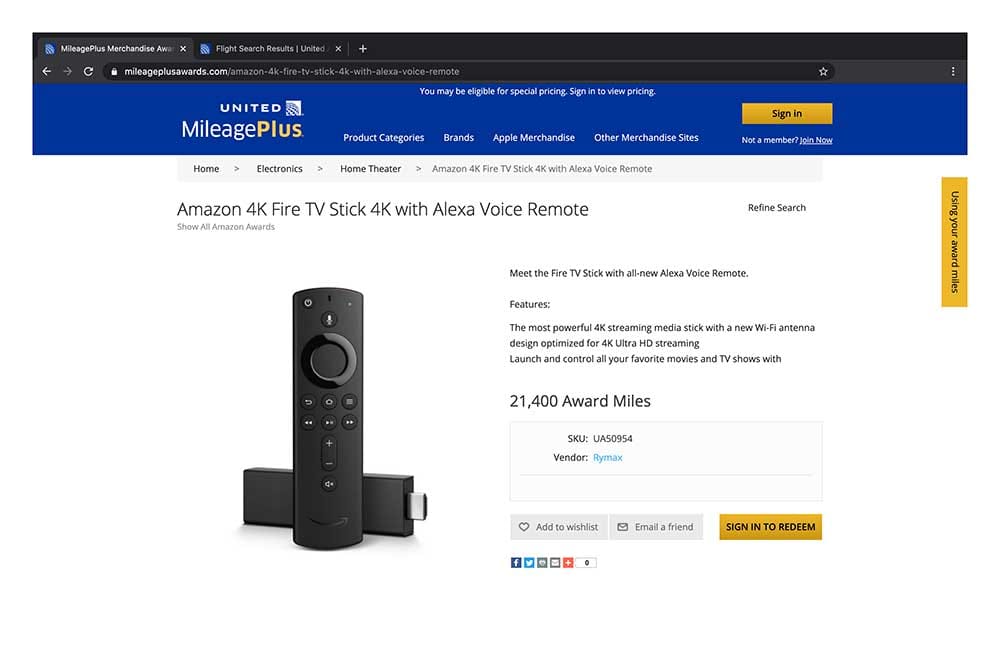
In the example pictured above, you can order an Amazon 4K Fire TV Stick with an Alexa Voice Remote for 21,400 miles. That product is available for $49.99 directly from Amazon, meaning you’ll get a value of only $0.002 per airline mile out of the redemption. That’s one-fifth of one cent!
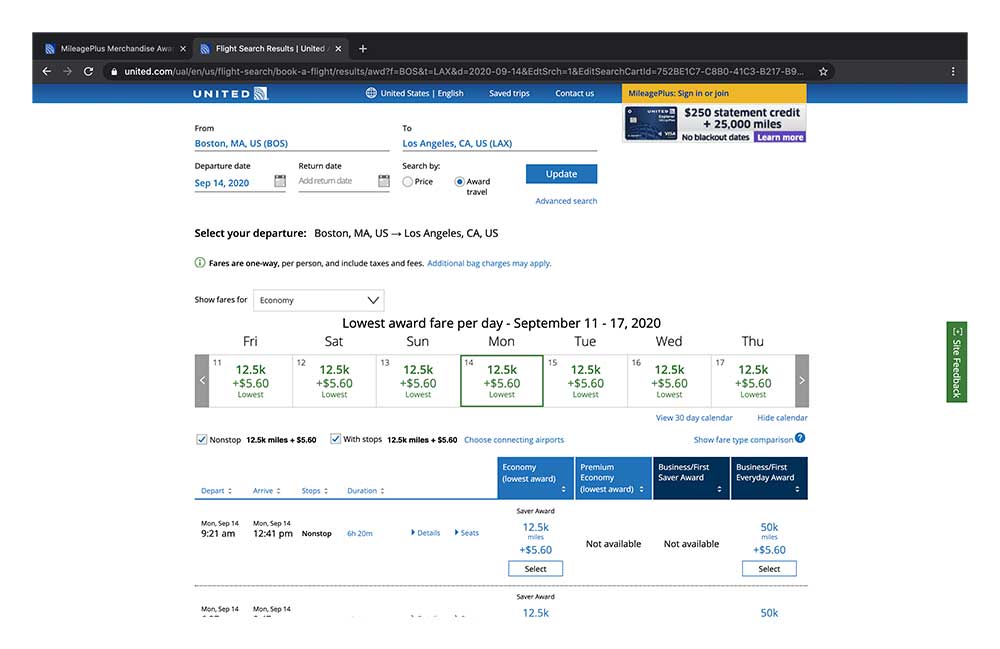
Now, let’s see what sort of value we can extract from an actual flight. In the screenshot above, I’ve searched for a random one-way flight, Boston to Los Angeles on a Monday. That ticket can be had for 12,500 United Airlines miles.
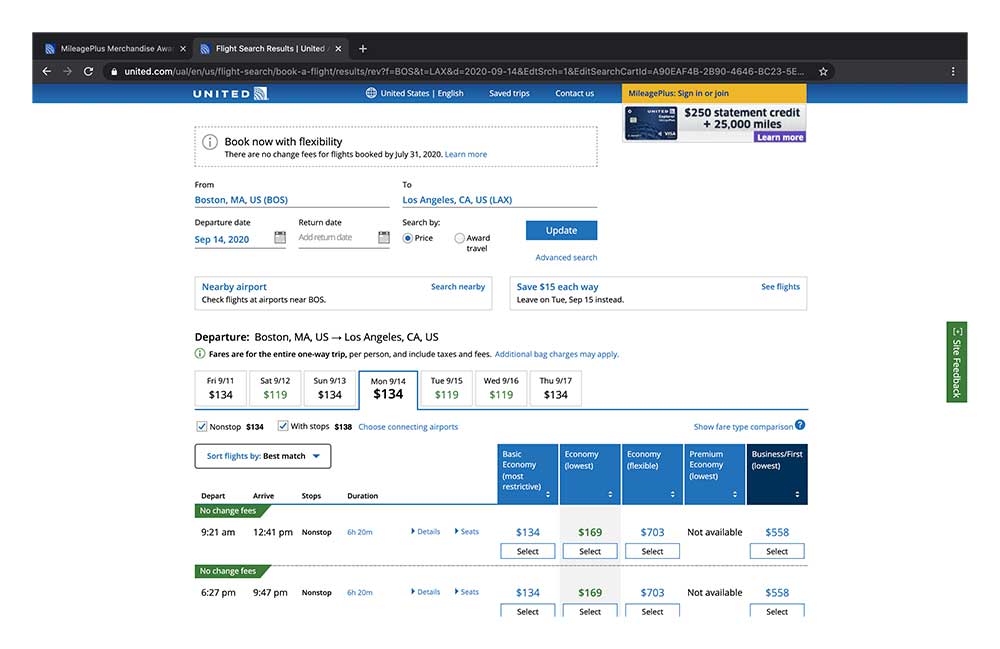
The lowest cash price of that same flight would be $134 for basic economy or $169 for standard economy. Since United award tickets book into standard economy, allowing you to select a seat and bring a full-size carry-on, we’ll use the $169 fare to calculate the redemption value of our frequent flyer miles.
$169 divided by 12,500 miles would give us a value of $0.0135 per mile, or just over one penny per airline mile. That’s certainly not a great value, or anywhere close to the best value possible, but it’s still 5 times better than redeeming for the $50 TV dongle.
Saving your miles for years (only to watch their value decrease)
Just like every other currency on Earth, award miles and points are subject to inflation. And, unlike your dollars or Euros, there is no interest-bearing savings account or stock market to invest your miles and points. You cannot ward off the inevitable devaluation of your miles and points.
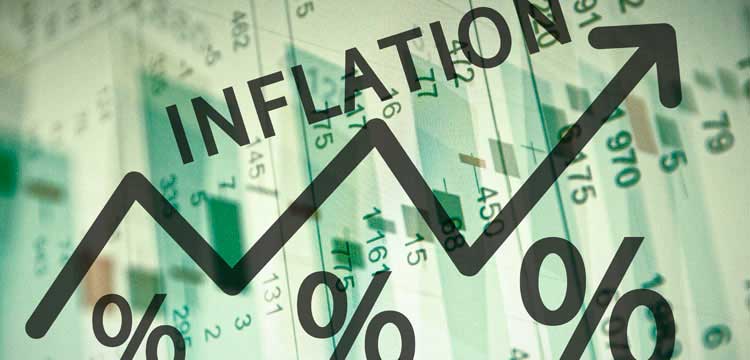
The best strategy, of course, is to put your rewards currencies to use. The common parlance in Points Addicts Anonymous is “earn and burn.” Don’t save your points and miles for the long-haul, as your American AAdvantage, Delta SkyMiles, Hilton Honors, Marriott Bonvoy and United MileagePlus accounts are not a retirement account.
So, why the inflation? More miles are being printed every day, and each one represents a liability to the issuer. Airlines and hotels want to wipe that liability off the books, and every so often they will implement a “devaluation,” wherein the cost of a reward is increased.
Let’s take an example from the American Airlines program. The cost of a first class award ticket between the U.S. mainland and Hawaii is currently 55,000 miles each way, or 110,000 miles round-trip. That’s really expensive. But, just last year, it was possible to redeem that same award for 40,000 miles each way or 80,000 miles round-trip. That was a huge devaluation of the program.
Although American Airlines announced the price increase well in advance, that warning is not provided every time or by every program. Many devaluations are unannounced and catch members by surprise. And so, the lesson is – earn & burn your miles, don’t let them linger in your account. Get as much value as you can as soon as you can.
Failing to embrace flexibility to get the best value out of your miles & points
Let’s say, for the sake of example, that you want to use your American Airlines miles to fly from New York to London in business class on June 4th. The price is 80,000 miles.
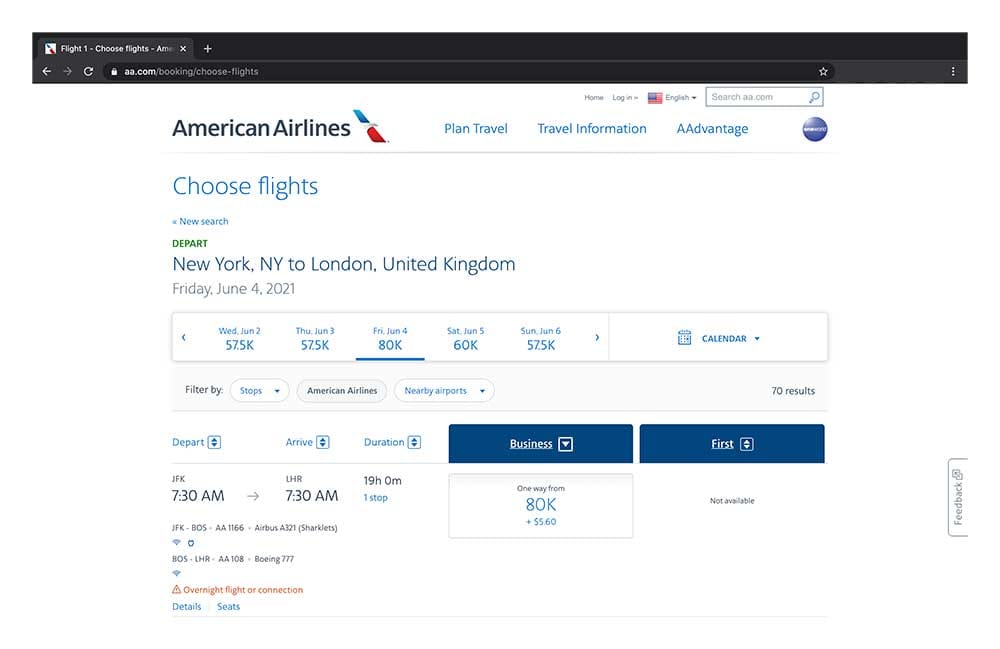
The thing is, you can save 20,000 miles by taking the trip a day later, or 22,500 miles by taking the trip a day earlier. Same flights, different day, much lower price.
Flexibility is key to getting the most value of your airline miles and hotel points, as pricing is based on demand and available inventory. In many cases, you’ll need to be much more flexible than leaving a day early or a day late. But, regardless, if you can be flexible, you should be. By moving the trip dates around a bit, or flying to/from a different airport, you can secure significant savings and stretch your miles much further.
Final Thoughts
The best players of the game, those who squeeze the greatest possible value out of their miles and points, never make the aforementioned mistakes. Although rewards currencies can’t be redeemed for hard cash, for those who love to travel – they are as good as cash. Guard your collection of miles and points like you would the money in your bank account, and you’ll be able to see so much more of the world on the airline’s or hotel’s dime.

